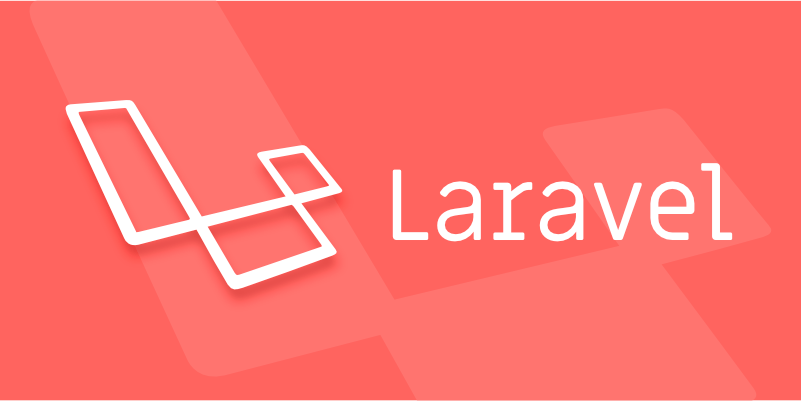Securing Laravel routes with authentication and middleware
Jul 03, 2025 am 12:56 AMTo secure routes in a Laravel application, use authentication and middleware. First, apply the built-in auth middleware to restrict access to authenticated users via route definitions or controller constructors. Second, create custom middleware like EnsureUserIsAdmin for role-based restrictions, register it in Kernel.php, and apply it to routes alongside auth. Third, secure API routes using Laravel Sanctum by assigning API tokens and applying the auth:sanctum middleware, ensuring tokens are included in the Authorization header during requests.

When building a Laravel application, securing routes is essential to protect sensitive functionality and data. This typically involves using authentication and middleware — two powerful tools Laravel provides out of the box. Let’s break down how to use them effectively.

How Authentication Protects Routes
Laravel comes with a built-in authentication system that makes it easy to verify users before allowing access to certain parts of your app. The most straightforward way to secure a route is by using the auth middleware.

For example, if you have a dashboard page that should only be visible to logged-in users, you can apply the middleware directly in your route definition:
Route::get('/dashboard', function () {
return view('dashboard');
})->middleware('auth');Behind the scenes, this checks whether the user is authenticated. If not, they’ll be redirected to the login page. No need for extra checks — Laravel handles it all.

You can also apply this in a controller constructor, which is cleaner when dealing with multiple methods:
public function __construct()
{
$this->middleware('auth');
}This ensures that any method in the controller is only accessible to authenticated users.
Using Custom Middleware for Specific Access Rules
Sometimes just being logged in isn’t enough — you might want to restrict access based on roles or permissions. That’s where custom middleware comes in handy.
Let’s say you have an admin area that only users with the “admin” role can access. First, create the middleware:
php artisan make:middleware EnsureUserIsAdmin
Then, in the generated file under app/Http/Middleware, add your logic:
public function handle($request, $next)
{
if (! $request->user()->isAdmin()) {
abort(403, 'Unauthorized action.');
}
return $next($request);
}Register the middleware in app/Http/Kernel.php under $routeMiddleware:
'admin' => \App\Http\Middleware\EnsureUserIsAdmin::class,
Now you can apply it like any other middleware:
Route::get('/admin', function () {
return view('admin.dashboard');
})->middleware(['auth', 'admin']);This way, only authenticated users who pass the admin check can access the route.
- You can stack multiple middleware layers.
- Order matters: the request goes through them from left to right.
- Always test unauthorized access scenarios during development.
Securing API Routes with Token or Sanctum Authentication
If you're building an API with Laravel, traditional session-based auth won’t cut it. Instead, you can use Laravel Sanctum or Passport for token-based authentication.
With Sanctum, each user gets an API token. When defining API routes, use the auth:sanctum guard:
Route::middleware('auth:sanctum')->get('/user', function (Request $request) {
return $request->user();
});To generate tokens, you can do something like this in your controller:
$token = $user->createToken('API Token Name')->plainTextToken;Make sure to include this token in the Authorization header when making requests:
Authorization: Bearer [your-token-here]
Sanctum is lightweight and perfect for SPAs or mobile apps that communicate with your Laravel backend.
That covers the main ways to secure Laravel routes — using built-in auth, creating custom middleware for specific rules, and handling API access. It's not complicated once you understand how the pieces fit together, but it’s easy to miss small details like middleware order or token setup.
The above is the detailed content of Securing Laravel routes with authentication and middleware. For more information, please follow other related articles on the PHP Chinese website!

Hot AI Tools

Undress AI Tool
Undress images for free

Undresser.AI Undress
AI-powered app for creating realistic nude photos

AI Clothes Remover
Online AI tool for removing clothes from photos.

Clothoff.io
AI clothes remover

Video Face Swap
Swap faces in any video effortlessly with our completely free AI face swap tool!

Hot Article

Hot Tools

Notepad++7.3.1
Easy-to-use and free code editor

SublimeText3 Chinese version
Chinese version, very easy to use

Zend Studio 13.0.1
Powerful PHP integrated development environment

Dreamweaver CS6
Visual web development tools

SublimeText3 Mac version
God-level code editing software (SublimeText3)

Hot Topics
 What are routes in Laravel, and how are they defined?
Jun 12, 2025 pm 08:21 PM
What are routes in Laravel, and how are they defined?
Jun 12, 2025 pm 08:21 PM
In Laravel, routing is the entry point of the application that defines the response logic when a client requests a specific URI. The route maps the URL to the corresponding processing code, which usually contains HTTP methods, URIs, and actions (closures or controller methods). 1. Basic structure of route definition: bind requests using Route::verb('/uri',action); 2. Supports multiple HTTP verbs such as GET, POST, PUT, etc.; 3. Dynamic parameters can be defined through {param} and data can be passed; 4. Routes can be named to generate URLs or redirects; 5. Use grouping functions to uniformly add prefixes, middleware and other sharing settings; 6. Routing files are divided into web.php, ap according to their purpose
 What are policies in Laravel, and how are they used?
Jun 21, 2025 am 12:21 AM
What are policies in Laravel, and how are they used?
Jun 21, 2025 am 12:21 AM
InLaravel,policiesorganizeauthorizationlogicformodelactions.1.Policiesareclasseswithmethodslikeview,create,update,anddeletethatreturntrueorfalsebasedonuserpermissions.2.Toregisterapolicy,mapthemodeltoitspolicyinthe$policiesarrayofAuthServiceProvider.
 How do I create new records in the database using Eloquent?
Jun 14, 2025 am 12:34 AM
How do I create new records in the database using Eloquent?
Jun 14, 2025 am 12:34 AM
To create new records in the database using Eloquent, there are four main methods: 1. Use the create method to quickly create records by passing in the attribute array, such as User::create(['name'=>'JohnDoe','email'=>'john@example.com']); 2. Use the save method to manually instantiate the model and assign values ??to save one by one, which is suitable for scenarios where conditional assignment or extra logic is required; 3. Use firstOrCreate to find or create records based on search conditions to avoid duplicate data; 4. Use updateOrCreate to find records and update, if not, create them, which is suitable for processing imported data, etc., which may be repetitive.
 How do I run seeders in Laravel? (php artisan db:seed)
Jun 12, 2025 pm 06:01 PM
How do I run seeders in Laravel? (php artisan db:seed)
Jun 12, 2025 pm 06:01 PM
Thephpartisandb:seedcommandinLaravelisusedtopopulatethedatabasewithtestordefaultdata.1.Itexecutestherun()methodinseederclasseslocatedin/database/seeders.2.Developerscanrunallseeders,aspecificseederusing--class,ortruncatetablesbeforeseedingwith--trunc
 What is the purpose of the artisan command-line tool in Laravel?
Jun 13, 2025 am 11:17 AM
What is the purpose of the artisan command-line tool in Laravel?
Jun 13, 2025 am 11:17 AM
Artisan is a command line tool of Laravel to improve development efficiency. Its core functions include: 1. Generate code structures, such as controllers, models, etc., and automatically create files through make: controller and other commands; 2. Manage database migration and fill, use migrate to run migration, and db:seed to fill data; 3. Support custom commands, such as make:command creation command class to implement business logic encapsulation; 4. Provide debugging and environment management functions, such as key:generate to generate keys, and serve to start the development server. Proficiency in using Artisan can significantly improve Laravel development efficiency.
 How do I install Laravel on my operating system (Windows, macOS, Linux)?
Jun 19, 2025 am 12:31 AM
How do I install Laravel on my operating system (Windows, macOS, Linux)?
Jun 19, 2025 am 12:31 AM
Yes,youcaninstallLaravelonanyoperatingsystembyfollowingthesesteps:1.InstallPHPandrequiredextensionslikembstring,openssl,andxmlusingtoolslikeXAMPPonWindows,HomebrewonmacOS,oraptonLinux;2.InstallComposer,usinganinstalleronWindowsorterminalcommandsonmac
 How do I define methods (actions) in a controller?
Jun 14, 2025 am 12:38 AM
How do I define methods (actions) in a controller?
Jun 14, 2025 am 12:38 AM
Defining a method (also known as an action) in a controller is to tell the application what to do when someone visits a specific URL. These methods usually process requests, process data, and return responses such as HTML pages or JSON. Understanding the basic structure: Most web frameworks (such as RubyonRails, Laravel, or SpringMVC) use controllers to group related operations. Methods within each controller usually correspond to a route, i.e. the URL path that someone can access. For example, there may be the following methods in PostsController: 1.index() – display post list; 2.show() – display individual posts; 3.create() – handle creating new posts; 4.u
 How do I run tests in Laravel? (php artisan test)
Jun 13, 2025 am 12:02 AM
How do I run tests in Laravel? (php artisan test)
Jun 13, 2025 am 12:02 AM
ToruntestsinLaraveleffectively,usethephpartisantestcommandwhichsimplifiesPHPUnitusage.1.Setupa.env.testingfileandconfigurephpunit.xmltouseatestdatabaselikeSQLite.2.Generatetestfilesusingphpartisanmake:test,using--unitforunittests.3.Writetestswithmeth






